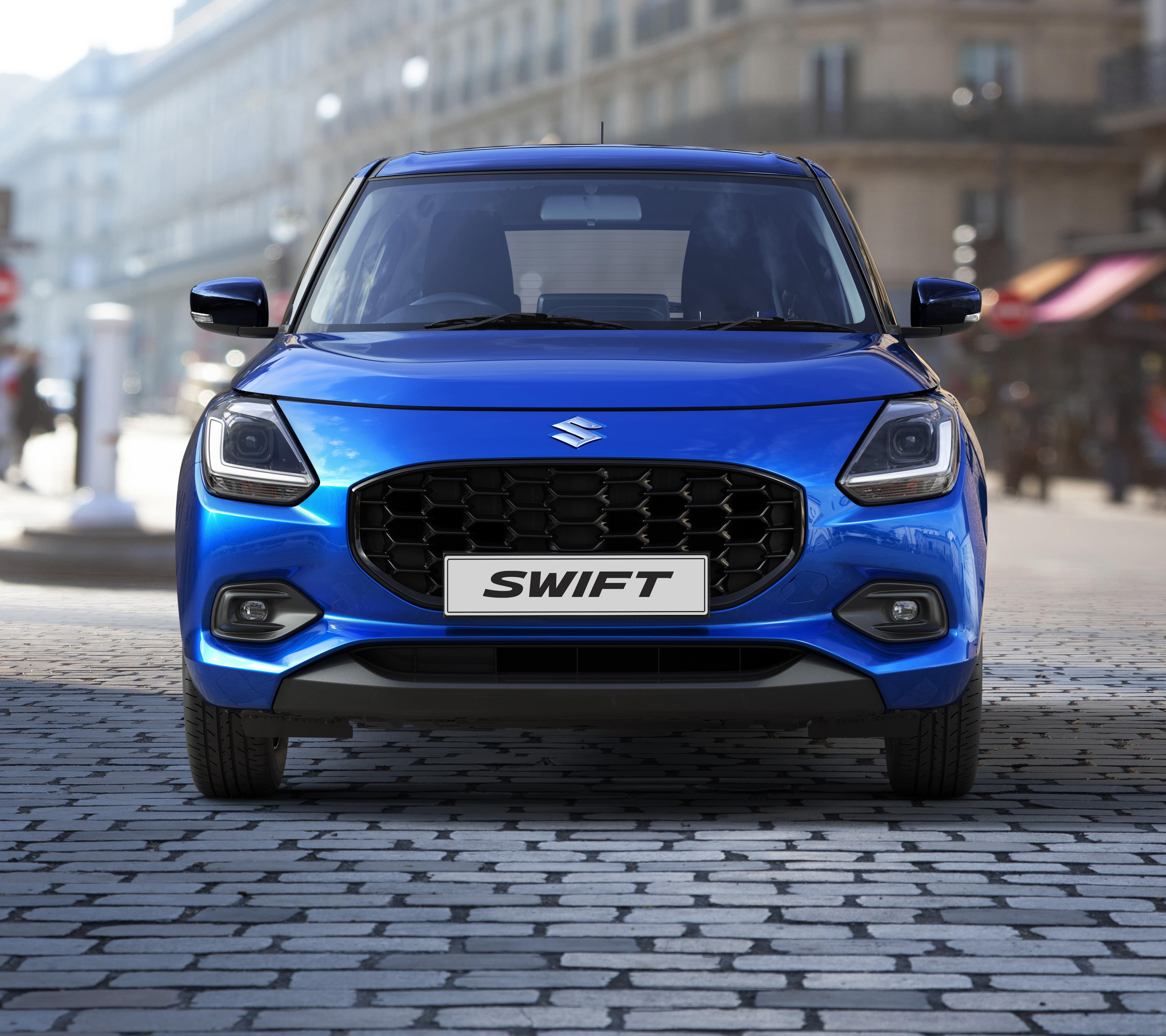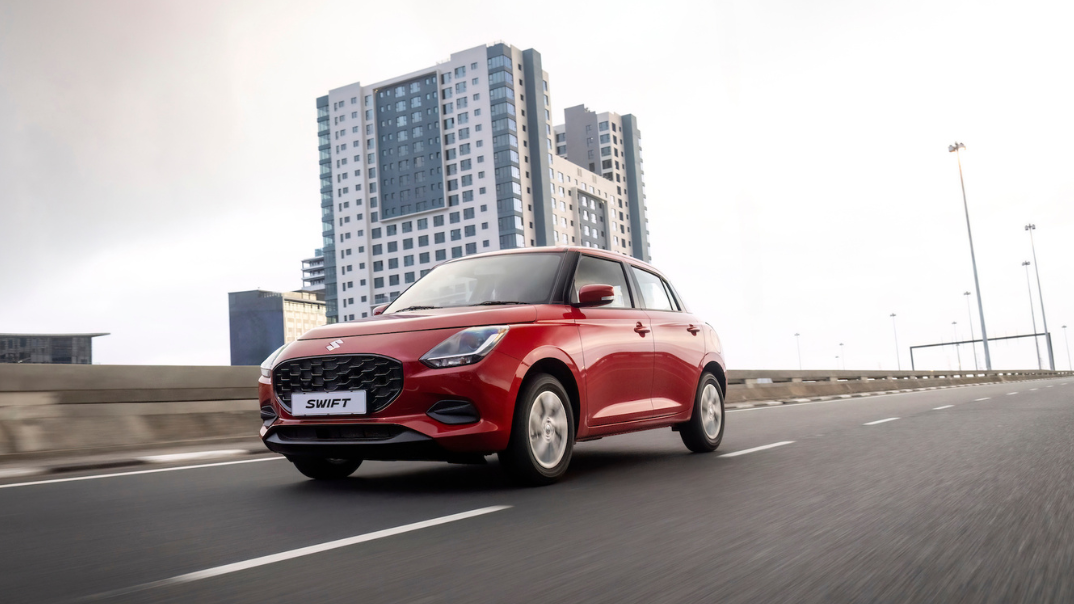 In the 16 years since the original Suzuki Swift was shown publicly at the Paris Motor Show, the compact car has garnered awards and accolades in each iteration and remains, consistently, a ‘mould-breaker’ in its segment.
In the 16 years since the original Suzuki Swift was shown publicly at the Paris Motor Show, the compact car has garnered awards and accolades in each iteration and remains, consistently, a ‘mould-breaker’ in its segment.
The recently launched fourth generation Suzuki Swift is an evolution of the iconic revolution that trumpeted Suzuki’s arrival in the compact segment – a car born from a clean slate not only to challenge the established market, but to set a new direction for the Suzuki brand in general.
"We knew right from the start of this project that we wanted the Swift to be a totally new kind of compact car. We wanted to set a truly global standard that would represent a turning point in the way Suzuki designs and builds passenger vehicles," said Eiji Mochizuki, Vehicle Line Executive in the Super Minicar Engineering Division at Suzuki Motor Corporation in Japan at the time of the launch.
"The challenges were huge, as we needed to develop a totally new platform. We spent months in Europe working on the styling and handling, and we even had to devise new systems for component development. But the rewards have been just as great."
The Swift underwent an exhaustive research and development process that addressed the extremely demanding European market requirements in terms of styling, ride refinement, build quality and sophistication. A European design and development arm was established specifically to address these issues.
To critical acclaim, the Suzuki Swift made its high-profile debut at the 2004 Paris Motor Show and then went on to garner a long list of automotive accolades for its innovation around the world, including overall Car of the Year titles in Japan, Australia, the UK and numerous other countries.
Suzuki's design direction was most apparent in the front styling of the Swift – and this has progressed through each update to the latest variant.
One of the most individual design cues is the wrap-around glasshouse windscreen design, complemented by the blacked-out A and B-pillars. It clearly hints at the integrated look of a helmet visor and creates a natural synergy with Suzuki's equally desirable motorcycle products.
2008 Suzuki Swift

The Suzuki Swift entered the South African market in June 2008 as a bold new player in the compact car category, coming into the highly competitive class with a true value proposition thanks to extremely attractive pricing and an all-encompassing after-sales service and warranty package, provided under the 'Suzuki Complete' banner.
Three models were offered at launch, all powered by a 1,5-litre four-cylinder multi-point fuel-injected engine employing variable valve timing (VVT).
2014 Suzuki Swift

In 2014 Suzuki Auto South Africa added the new, more affordable 1.2 model to its Swift compact hatchback line-up.
The Swift 1.2 augmented the existing Swift range, was offered with a choice of manual or automatic transmissions and in two specification levels.
For this generation, the key styling attributes remained, notably the sharply raked windscreen, wide body and prominent headlight and tail light clusters.
2015 Suzuki Swift
In 2015 Suzuki Auto South Africa announced a series of updates to its Suzuki Swift 1.2 and Dzire models. The changes include revised exterior styling, as well as improvements to the interior execution.
At the same time, improvements to the engine management system allowed an improvement in efficiency, with reduced fuel consumption and lower CO2 exhaust emissions the direct result.
Externally, the updated Swift 1.2 and Dzire gained a new grille and front bumper design, while the Dzire is also fitted with a redesigned front headlight cluster and a revised rear bumper. Full-sized wheel covers are standard, too, while a new range of exterior colours are offered on both models.
Inside, all GL models now gain Bluetooth connectivity as standard, while the rear bench seat of the Swift 1.2 was split 60:40 for improved versatility. The Dzire’s cockpit features a smarter, black-hued cloth upholstery.

2018 Suzuki Swift
.png?width=495&height=279&name=pasted%20image%200%20(1).png)
The third generation Suzuki Swift, launched in 2018, showcased a significant design update and evolution. With the overall length reduced by 10mm and an adjusted wheelbase and width.
The silhouette, which mimics the look of a racing helmet and its width-over-length preference, became the foundation of the Swift’s distinctive visual signature and it has been carried over to the all-new model.
For the 2018 Suzuki Swift model, Suzuki’s designers added new styling elements such as rear door handles in the C-pillar, a new grille with large Suzuki badge and a wide and narrow secondary grille. These elements visually lifted the height of the nose, while retaining aerodynamic efficiency. This compact hatch maintained the iconic Swift styling making it a winner among journalists and drivers alike.
2021 Suzuki Swift Minor Update

The 2021 update of the Suzuki Swift introduced subtle yet strategic improvements to the exterior design, maintaining the Swift's iconic look while keeping it competitive and ahead of the curve in the evolving compact car market.
The tweaks included refined grille detailing and slightly revised bumper designs, providing a fresh look without taking away from the Swift's signature look. Inside, the infotainment system received an upgrade, offering more connectivity features, ensuring the Swift continues to embody its unique, modern driving experience.
2024 Suzuki Swift
The highly anticipated fourth-generation Suzuki Swift, released in 2024, marks a new era for this beloved, iconic hatchback. With more than 6 million units sold globally, Suzuki has taken bold steps to modernise the Swift for today’s market, making it both sleeker and more tech-savvy than ever before.

In this latest model, Suzuki introduces a more aerodynamic design, with a reshaped body that provides a sportier, more streamlined look while still honouring the Swift’s iconic style. The Swift's exterior has been revamped with a new grille, redesigned headlights, and LED lighting across all models, giving the Swift a refreshed and sophisticated appearance.
Under the hood, the 1.2-litre petrol engine has been fine-tuned for even better fuel efficiency, offering improved driving dynamics and lower fuel emissions. The standard Suzuki manual and automatic transmission options are available for all the new Swift models.
The interior also sees a significant upgrade in both space and technology. The infotainment system now features a larger, high-definition touchscreen with built-in smartphone compatibility (Apple CarPlay and Android Auto), providing drivers with easy, hands free, access to navigation, music, and communication apps. The dashboard has been redesigned with a more intuitive layout, and comes equipped with a digital driver display of varying LCDs, depending on the model you choose.
Passenger comfort has also been prioritised, with additional legroom and improved seat covering materials, making the 2024 Swift a more comfortable space for both city commutes and longer road trips. The rear seats continue to offer a 60:40 split, increasing the car’s cargo capacity for added versatility.
Perhaps the most exciting addition is the suite of driver-assistance technologies, including adaptive cruise control, lane-keep assist, and automatic emergency braking, ensuring the Swift keeps up with the growing demand for safety features in compact cars.

Suzuki’s 2024 Swift continues its iconic legacy of offering an affordable yet stylish vehicle, now paired with cutting-edge tech and impressive performance. With this new model, Suzuki has crafted a car that not only appeals to loyal fans but also attracts drivers looking for a more modern, more agile, and safer compact hatchback than ever available before.
Want to experience this iconic Suzuki for yourself? Book a test drive in the Swift and find out why fans across South Africa love the Swift.
Want to experience this iconic Suzuki for yourself? Book a test drive in the Swift and find out why fans across South Africa love the Swift.



